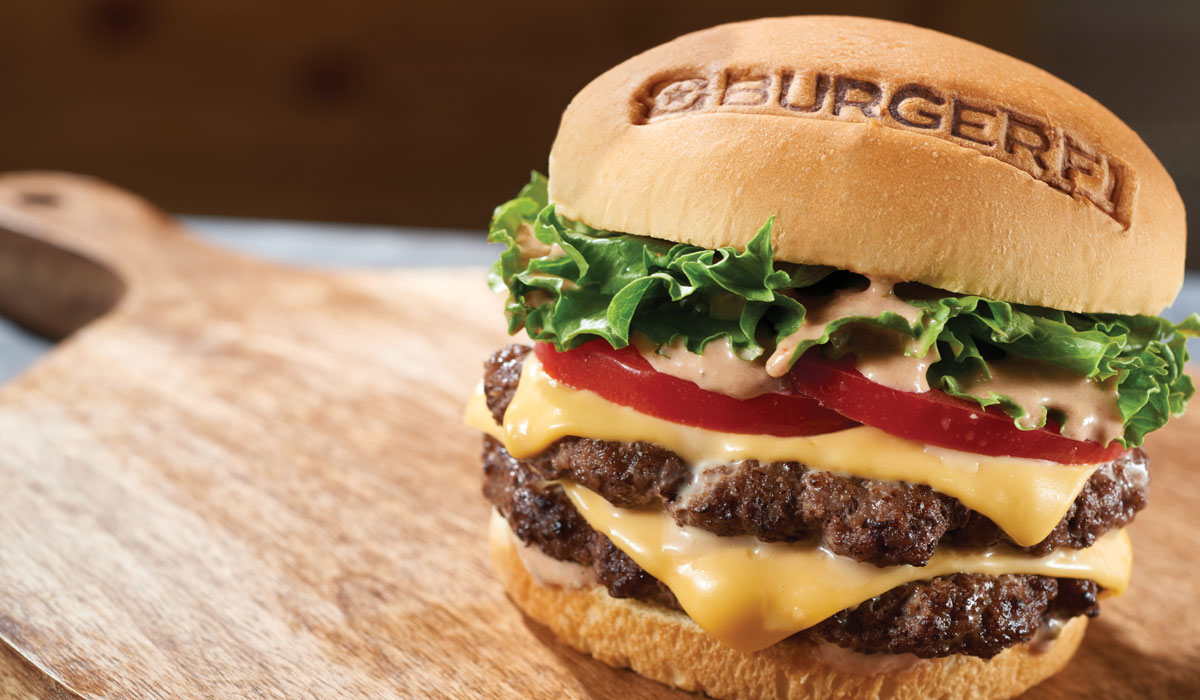BurgerFi executives shared several details of their business plan for the coming year at the ICR conference this week, including new technology, a revamped development strategy, and a January price increase to offset inflation.
The brand is looking to bounce back from an underwhelming 2021 that failed to meet expansion goals. BurgerFi opened 16 stores last year (10 company-run and six franchises), well below its projected 25-30 restaurants. Lagging development was in large part due to pandemic-related circumstances, CEO Ian Baines and CFO Michael Rabinovitch said during the conference.
But the Florida-based chain is out to prove its still prepared to grow. Rabinovitch said the company is “really excited to get into 2022 and put out some results that will show the investment community that [BurgerFi] an investment worth taking.”
The burger chain hopes much of its attraction will come from technological upgrades as it finds solutions for the ongoing labor shortage. Digital kiosks debuted around two months ago at four locations, and Baines and Rabinovitch said results have beaten expectations.
“We really like what we’re seeing,” Rabinovitch said. “Both from an experience perspective … as well as an outcome perspective.”
With a user-friendly kiosk in place, fewer workers are needed in the front of the house and customers avoid points of friction. Secondly, Baines and Rabinovitch said kiosks have provided a noticeable bump in sales. They credit the increased average ticket to the technology’s ability to upsell, something a busy employee running a register might not have time to do.
At the four test sites, two out of three ordering stations have shifted to kiosk. The technology is absorbing anywhere between 50 and 70 percent of orders, with a 30 to 50 percent upsell rate. Average check from kiosks is 16 percent higher than orders taken by person.
Before the technology can be rolled out systemwide, several evaluations need to be made, such as making sure the technology’s deployment partner can sustain the business, Rabinovitch said. But there is a keen interest in introducing the technology nationally.
“We’re probably about halfway through our evaluation period, and it’s a decision we’d want to make in early 2022,” he said.
In addition to kiosks, the fast casual announced in December that it will be the first restaurant to launch in-car ordering through 5G cars debuting next summer. The innovation will be rolled out in partnership with Mavi.io, an in-car retail marketplace that curates shopping options on an interactive vehicle dashboard. Picture a driver verbally telling the car they’re hungry, and the vehicle responding with options on the dashboard. The car would then place the order, coordinate navigation, and notify the restaurants when it arrives.
BurgerFi also revealed that its testing Patty the Robot, a machine that serves tables and returns trays and piloting QR code ordering at tables.
Along with new technology, BurgerFi bolstered its management team to guide future development. Ron Biskin was hired as chief development officer to spearhead expansion for both BurgerFi and Anthony’s Coal Fired Pizza & Wings, which the burger brand purchased for $156.6 million late last year. Biskin brings more than 25 years of experience, having previously worked for TGI Fridays, Chili’s, Burger King, and Wolfgang Puck.
Part of the refocused development effort will be reconfiguring the layout of Anthony’s to make it more franchise friendly.
Baines said a traditional Anthony’s buildout runs around 3,200 square feet and costs approximately $1.3 million to open. The redesigned store with a smaller footprint will be around 2,200 square feet, which should cut costs by roughly 33 percent. Most of the square footage will be clipped from the dining room, leaving the design of the kitchen “pretty much the same.”
“The return on investment becomes much more attractive,” he said.
The company has already opened one of the reimagined Anthony’s in Springfield, Pennsylvania. The unit is 1,700 square feet and is being used to test the viability of the model.
“We’ve used that one to test and learn … seeing how does the consumer react to it, what’s working within that, what’s not working within that,” Baines said. “Now we’re taking those learnings and brining it closer to home.”
The management team at Anthony’s is heeding those new learnings and will look for locations to develop one or two of these smaller units by the end of the year, particularly in Florida, the home base of both BurgerFi and Anthony’s. Members of BurgerFi’s franchise community have already expressed interest in adding the pizza and wing chain to their portfolio, executives said.
As it relates to inflation, like others in the industry, BurgerFi has felt the effects of supply chain hiccups and the steady rise of commodities.
“We have not seen it improve,” Rabinovitch said.
Because of this, Anthony’s and BurgerFi took modest price increases, and more hikes are scheduled for this year. The burger chain plans to take three percent in January, while Anthony’s will raise prices by about two percent.
As of December 31, BurgerFi had 118 units, comprised of 25 corporate and 93 franchise locations. The brand generated $166 million in systemwide sales in 2021, which represents sales growth of over 30 percent. Same-store sales lifted 13 percent year-over-year, and the chain earned $46 million in revenue.
The company hopes to grow open 15-20 units in the coming year, including BurgerFi and redesigned Anthony’s locations. Fewer than half of the units will be company owned; the majority will be franchised and licensed BurgerFi locations.








